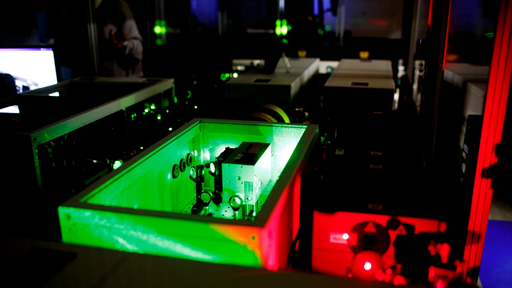Greißel, P.M., Thiel, D., Gotfredsen, H., Chen, L., Krug, M., Papadopoulos, I., Miskolzie, M., Torres, T., Clark, T., Nielsen, M.B., Tykwinski, R.R., Guldi, D.M.
Angew. Chem., Int. Ed. 63(8), e202315064.
Triplet dynamics in singlet fission depend strongly on the strength of the electronic coupling. Covalent systems in solution offer precise control over such couplings. Nonetheless, efficient free triplet generation remains elusive in most systems, as the intermediate triplet pair 1(T1T1) is prone to triplet-triplet annihilation due to its spatial confinement. In the solid state, entropically driven triplet diffusion assists in the spatial separation of triplets, resulting in higher yields of free triplets. Control over electronic coupling in the solid state is, however, challenging given its sensitivity to molecular packing. We have thus developed a hexameric system (HexPnc) to enable solid-state-like triplet diffusion at the molecular scale. This system is realized by covalently tethering three pentacene dimers to a central subphthalocyanine scaffold. Transient absorption spectroscopy, complemented by theoretical structural optimizations and steady-state spectroscopy, reveals that triplet diffusion is indeed facilitated due to intramolecular cluster formation. The yield of free triplets in HexPnc is increased by a factor of up to 14 compared to the corresponding dimeric reference (DiPnc). Thus, HexPnc establishes crucial design aspects for achieving efficient triplet dissociation in strongly coupled systems by providing avenues for diffusive separation of 1(T1T1), while, concomitantly, retaining strong interchromophore coupling which preserves rapid formation of 1(T1T1).

Greißel, P.M., Thiel, D., Gotfredsen, H., Chen, L., Krug, M., Papadopoulos, I., Miskolzie, M., Torres, T., Clark, T., Nielsen, M.B., Tykwinski, R.R., Guldi, D.M.
Angew. Chem., Int. Ed. 63(8), e202315064.
Triplet dynamics in singlet fission depend strongly on the strength of the electronic coupling. Covalent systems in solution offer precise control over such couplings. Nonetheless, efficient free triplet generation remains elusive in most systems, as the intermediate triplet pair 1(T1T1) is prone to triplet-triplet annihilation due to its spatial confinement. In the solid state, entropically driven triplet diffusion assists in the spatial separation of triplets, resulting in higher yields of free triplets. Control over electronic coupling in the solid state is, however, challenging given its sensitivity to molecular packing. We have thus developed a hexameric system (HexPnc) to enable solid-state-like triplet diffusion at the molecular scale. This system is realized by covalently tethering three pentacene dimers to a central subphthalocyanine scaffold. Transient absorption spectroscopy, complemented by theoretical structural optimizations and steady-state spectroscopy, reveals that triplet diffusion is indeed facilitated due to intramolecular cluster formation. The yield of free triplets in HexPnc is increased by a factor of up to 14 compared to the corresponding dimeric reference (DiPnc). Thus, HexPnc establishes crucial design aspects for achieving efficient triplet dissociation in strongly coupled systems by providing avenues for diffusive separation of 1(T1T1), while, concomitantly, retaining strong interchromophore coupling which preserves rapid formation of 1(T1T1).